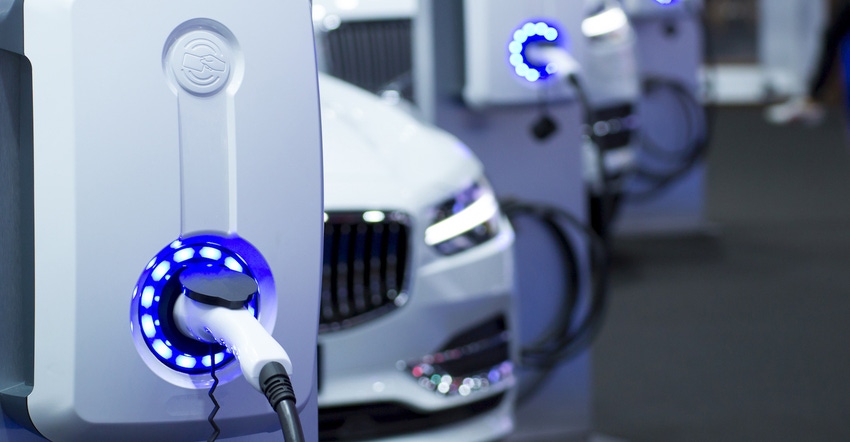Material sustainability, durability, and end-of-life issues will take priority over lightweighting by 2030, according to a study from Lux Research.
January 28, 2021

Lightweighting became an all-important factor when designing new car models a couple of decades ago. Automotive engineers reduced vehicle weight to help meet higher fleet mileage averages by incorporating materials such as engineering plastics, composites, and high-strength steel (HSS). Every ounce was critical for squeezing more miles out of a gallon of gas. But that was when internal combustion engine (ICE) vehicles were the norm and electric vehicles were just a futuristic dream.
According to a recent Lux Research report, Electric Vehicle Lightweighting 2030, battery electric vehicles (BEVs) will be less reliant on lightweighting in the years ahead. The increasingly faster transition from ICE vehicles to BEVs has automotive engineers changing both the goals and design considerations around lightweighting, according to Lux Research. “BEVs are overwhelmingly more efficient than ICE vehicles due to regenerative braking and more-efficient motors and are increasingly outgrowing the issue of limited range,” said Anthony Schiavo, Senior Analyst at Lux. “Materials companies need to start planning for a fully mature BEV space.”
Lux predicts that battery pack energy densities will increase by roughly 15% over the next decade. This increased energy density can be used either to extend the range of a BEV by keeping battery size the same or reduce cost by shrinking the size of the battery pack. Range has been an important factor for consumers considering an EV over and ICE vehicle. Most mid-price BEVs have a limited range of 200 to 400 km (about 124 to 249 miles), which means that the drive to lightweight BEVs comes from a desire to extend range to meet consumers’ needs.
In order for lightweighting to be cost effective compared with batteries by 2030, materials companies and manufacturers will need to find solutions that save on both weight and cost, said Schiavo.
When it comes to platform design, Lux notes that BEVs are increasingly being designed around shared rolling frames that contain the batteries, drive systems, and, in some cases, structural elements of the cars. Decisions around lightweighting these elements, such as battery packs, will have a major impact across all BEVs produced by OEMs, heightening the importance of collaborating on these platform designs.
BEV batteries are typically located in a low, flat container on the floor of the car. This mass, combined with the removal of the ICE, means BEVs naturally have very low centers of gravity, and their mass is much more evenly distributed front to back, explains Lux. These conditions are highly favorable for tight control, enabling even smaller-priced BEVs, like the Tesla Model 4, to handle extremely well. The consequence, however, is that performance-driven lightweighting is far less necessary.
Lux looked at one case study involving a collaboration between Faurecia Automotive, a France-based global Tier 1 supplier, and material producer Lanxess. Composite seat shells designed using polyimide/carbon-fiber composite shaved off more than 45% of the mass of a steel component. These materials are expensive — the design was adopted in the Audi A8 — but the design approach, which includes multiple built-in features and consolidated components, is applicable across all price ranges. The benefits include reduced production costs and easier assembly of the seat components.
“We predict vehicle structure will be an opportunity for high-strength steel and aluminum, as they provide weight reductions at minimal cost,” Schiavo commented. “Bumpers are expected to benefit from design advancements that utilize glass fiber, carbon fiber, and thermoplastics. Other material priorities, such as sustainability, durability, and end-of-life issues, however, will take priority over lightweighting by 2030.”
Lux added that there is far more risk of disruption from improving energy-storage technologies — which could substantially outstrip forecast improvements by 2030 — than there is from innovations in materials.
About the Author(s)
You May Also Like




